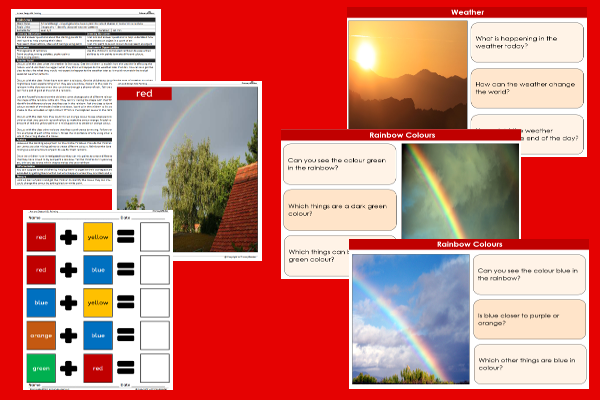Lesson Four – Rainbows

This art and design teaching pack for Key Stage One gets the children to investigate and model how to mix paint to record all of the different shades of colours that can be seen in a rainbow in the sky as part of a landscape weather painting.
The class can identify and describe how rainbows can be illustrated in a painting depicting how the weather can affect a landscape.
Download this teaching pack including a lesson plan, classroom activities and an interactive presentation to teach the children to investigate and model how to mix paint to record all of the different shades of colours that can be seen in a rainbow in the sky as part of a landscape weather painting
Activities in this teaching pack include display posters to identify and describe all of the colour shades visible in a rainbow and a worksheet to practise using paints to mix different colour shades that could be used to represent different types of weather in a painting.
The interactive presentation gets the children to explore how to mix paint to record all of the different shades of colours that can be seen in a rainbow.
This lesson is part of a art and design scheme of work to get the children to practise different techniques of painting scenes depicting a specific type of rain to simulate natural phenomena in a range of different landscapes. There are teaching activities for shared learning, differentiated worksheets to support independent learning and interactive presentations to introduce concepts and key skills.
-

Money Coin Sums
Practise identifying, combining and recording sets of coins that can make matching sums that can be used when shopping for different products
-

Maths Number Assessment
Assess abilities in working with numbers to solve abstract and contextual problems when calculating sums, products and quotients using different techniques and methods
-

Animal Lists
Investigate how to compile lists using commas to present information about some of the special animals that live in habitats around the world
-

English Spelling Assessment
Assess abilities in spelling different vocabulary words based on the National Curriculum programmes of study for Key Stage One
